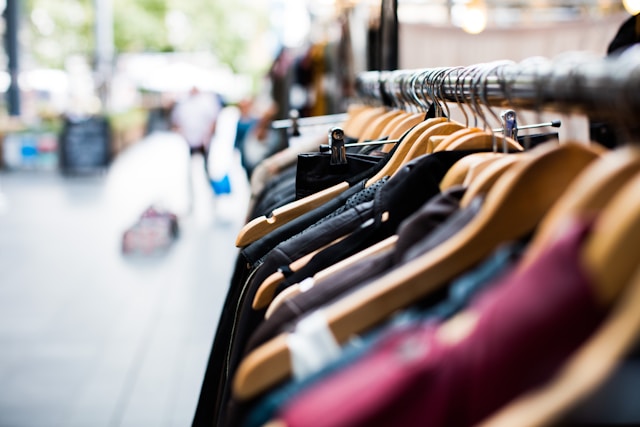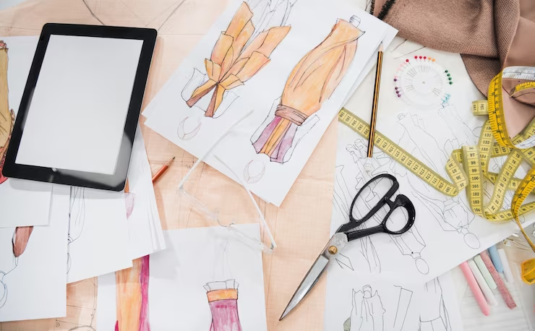Entering the fashion industry as a new designer is an exhilarating journey filled with creativity, innovation, and challenges. The process of transforming an idea into a tangible garment is a delicate blend of artistry and technical expertise. This article will guide you through the essential steps of the fashion design process, from initial sketches to creating your first sample, offering insights to help you navigate this complex yet rewarding path.
Understanding the Concept: Where Creativity Meets Strategy
Before putting pencil to paper, it’s crucial to start with a clear concept. This phase is where your creativity must align with strategic thinking. As a new designer, you need to define your target audience, understand current fashion trends, and consider the practicalities of production.
Research and Inspiration
Research is the backbone of the concept phase. It involves exploring fashion trends, cultural movements, and even historical references to build a strong foundation for your collection. Inspiration can come from anywhere—nature, art, architecture, or even personal experiences. Keep a sketchbook or digital mood board where you can compile images, fabric swatches, and colour palettes that resonate with your vision.
Target Audience and Market Analysis
Identifying your target audience is crucial. Understanding their lifestyle, preferences, and purchasing behaviour will help you create designs that appeal to them. Additionally, conducting a market analysis allows you to identify gaps in the market, ensuring your designs meet a need or desire that isn’t currently fulfilled.
The Design Phase: Bringing Ideas to Life
Once your concept is solidified, it’s time to translate your ideas into tangible designs. This phase involves sketching, selecting fabrics, and creating technical drawings that will guide the production process.
Sketching and Illustration
Sketching is where your creative ideas begin to take form. Start with rough sketches to explore different silhouettes, details, and proportions. As you refine your ideas, move on to more detailed illustrations that accurately represent the intended design. These sketches will serve as the blueprint for your final garment.
Fabric and Material Selection
The choice of fabric can make or break a design. As a new designer, you may be tempted to choose fabrics solely based on aesthetics. However, it’s important to consider the fabric’s weight, drape, and texture, as well as its suitability for the intended garment. Collaborating with fabric suppliers and understanding material properties will help you make informed decisions that enhance your designs.
Technical Drawings and Specification Sheets
Technical drawings, or flats, are essential for communicating your design to pattern makers and manufacturers. These drawings should include precise measurements, construction details, and stitching instructions. Accompany your technical drawings with specification sheets that outline fabric choices, trims, and other important details. This ensures that everyone involved in the production process has a clear understanding of your vision.
The Transition to Production: From Design to Sample
With your designs and technical specifications in hand, the next step is to create a sample—a prototype of your garment. This phase is critical for refining your design and ensuring that it can be produced efficiently and to your standards.
Pattern Making and Draping
Pattern making is the process of translating your 2D designs into 3D forms. This can be done manually or using computer-aided design (CAD) software. Draping, on the other hand, involves arranging fabric on a dress form to achieve the desired silhouette. As a new designer, you may choose to work with a skilled pattern maker to bring your designs to life. It’s important to ensure that your patterns are accurate and that the garment will fit as intended.
Sample Creation and Fitting
Once the pattern is created, it’s time to produce your first sample. This garment is your opportunity to see how your design translates into reality. Pay close attention to the fit, proportions, and overall construction. During the fitting, make any necessary adjustments to the pattern or design. Remember, this is a crucial step in the design process, as it allows you to identify and correct any issues before moving on to full production.
Final Adjustments and Revisions
After the sample is complete, it’s likely that you will need to make some final adjustments. This could involve tweaking the fit, changing a fabric choice, or refining a detail. These revisions are a normal part of the process and should be approached with an open mind. The goal is to perfect your design so that it meets both your vision and the expectations of your target audience.
Conclusion: Embracing the Journey from Sketch to Sample
The journey from sketch to sample is a complex yet fulfilling process that every new designer must navigate. It requires a balance of creativity, technical skill, and strategic thinking. By understanding each step of the fashion design process, from concept development to sample creation, you’ll be better equipped to bring your ideas to life and establish yourself in the competitive world of fashion.
Remember, every great designer started as a novice. Embrace the learning curve, stay true to your vision, and continue refining your craft. With persistence and passion, your sketches will one day become the garments that define your unique voice in fashion.




